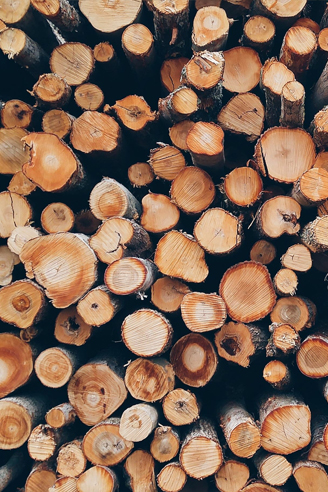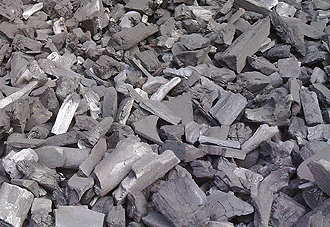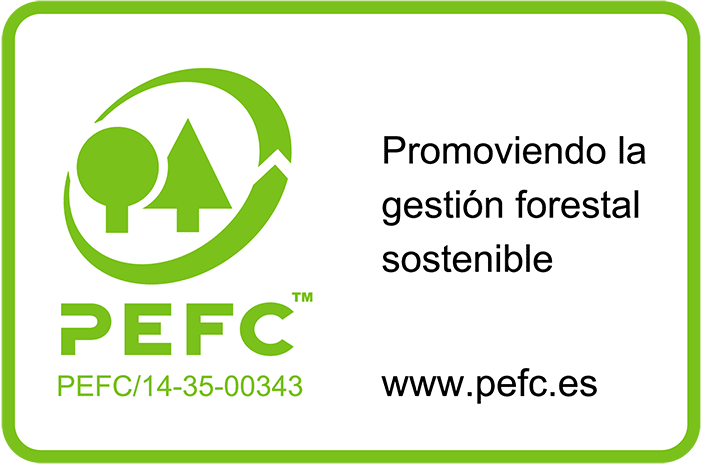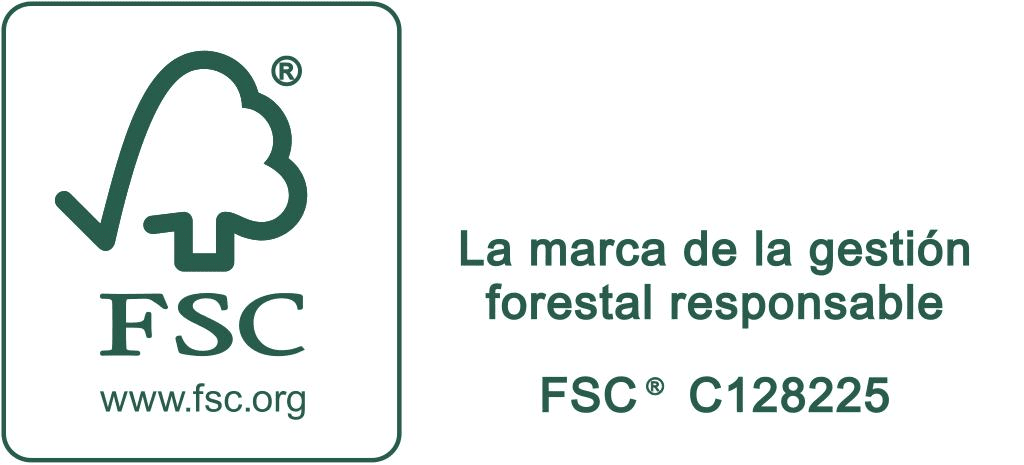¿How we do it?
CHARCOAL
Production begins with the selection of the raw material: the wood.
We use native woods such as holm oak, cork oak, eucalyptus rostrata and pine. These range from a density of 1200 kg/cm3
down to 500 kg/cm3 for pine.
Dense woods: holm oak and cork oak make very hard and long-burning charcoal, ideal for
use in specialised barbecue grills. However, this hardness is less appropriate for domestic use.
Medium and low-density woods: Eucalyptus rostrata and pine make relatively hard charcoal that can burn
for more than two hours, enough time for a barbecue at home.
And the greatest advantage is that you can start grilling after a short period of time.
Ideal for domestic use.
Before starting the carbonisation process of the wood, it is stored in our warehouses for enough time to reach the maximum optimisation of the charcoal in terms of fixed carbon, because the higher the content, the purer the product.
The ideal occurrence is natural ageing and loss of moisture before the production of charcoal.
PRODUCTION PROCESS
Before starting the carbonisation process of the wood, it is stored in our warehouses for enough time to reach the maximum optimisation
of the charcoal in terms of fixed carbon, because the higher the content, the purer
the product. The ideal occurrence is natural ageing and loss of moisture
before the production of charcoal.

CARBONISATION
This process is carried out in state-of-the-art kilns that adjust air intake at each moment of the process until hermetic sealing for cooling purposes. Thanks to the control of pyrolysis at all times, the end product exceeds the most stringent quality standards, i.e. high fixed carbon content and low volatile matter and waste, thereby delivering a charcoal with high calorific value and better performance.

SIFTING
Our commitment to quality means that we classify the product with a view to giving the consumer the ideal product for its ultimate use. In this process, we sift out pieces below 20 mm and we also homogenise the charcoal, so that you get uniform burning at all times and avoid some pieces burning out while others are yet to make embers.
MECHANICAL PACKAGING
We have an automatic machine that mechanically packs each bag with the programmed weight. Even so, we use a digital weighing machine to check the proper operation of our packing machine, with an output of up to 40,000 kg of bags per day. All the bags pass through a batch printing machine to control their traceability and allow for tracking up to the end customer. The packaging area features a dust extraction system that delivers a clean product and packaging, so it reaches the market or the end user with optimal presentation.
PRESENTATION
Our charcoal for domestic use is packaged in formats ranging from 2 kg to 10 kg, with the 3 kg format being the most popular.
Pallet layout is agreed with the client in terms of height, wrapping or type of pallet according to the standards at their logistics warehouse.
Bagging for professional use takes place in a semi-automatic machine and starts at a grain size of 50 mm, meaning that the end user receives an optimal product.
At all times, we agree on the product format with our clients
in keeping with their distribution needs.
PRODUCTION OF CHARCOAL BRIQUETTES.
Charcoal briquettes are a by-product of charcoal obtained from the ash powder generated by the sifting and cleaning process.
The ash powder is then mixed with a natural binder to make the mixture compact.
It then passes through rollers that have asymmetrical shapes to create the briquettes.
The mixture then spends three hours in a dryer to reduce its moisture to 6%.
Afterwards, it is sent to the warehouse for its subsequent packaging in different formats.
According to the product mixture, we can produce various qualities:
– Standard quality
– High quality
– Premium quality
Sign up to our Newsletter
We’ll keep you informed about special deals and campaigns





